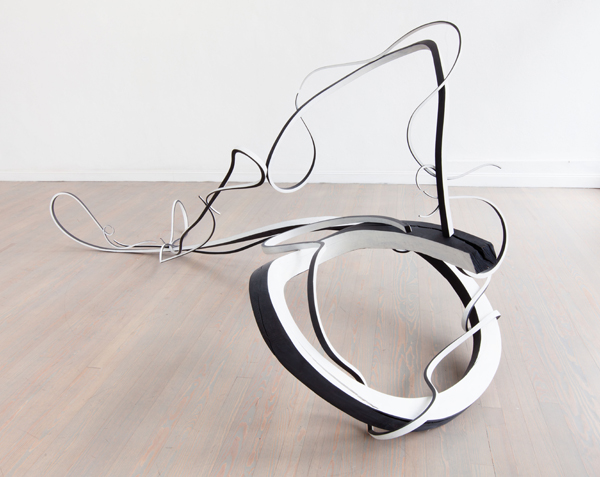"...always defer to the best solution."
Time's gotten away from me. I'm still far from the opportunity for a prepared, prewritten blog post, but among task and task I've had the privelege of hearing from Christopher Kurtz, a world renowned sculptor and furniture maker. So I thought I'd share some of what I've learned as a matter of course.

It's made of wood. The man makes universes from wood alone, after training to gain what he calls a "fluency in a single material." The benefits of that kind of conscious focus is something I've long wanted to share through this blog. Mr. Kurtz prefers to make his work by hand, not, he says, out of a romantic or nostalgic notion that handiwork leads to an increase in quality, but rather that it leads to a difference in quality. A difference that he obviously values. Just take a look at this forward moving animal:

Some other things I learned from Mr. Kurtz: a work that is pared down to a simpler form has fewer hiding places for imperfections. This is absolutely true not just in the visual arts, but in the verbal arts. Most of my blog readers are writers, so you probably know how transparent it feels to share your written work. There's no defense by saying that it's "high art" or "you simply don't get it." Words have definitions and if you have to hide behind complex words, there may be a lack of complex meaning. One of my biggest red flags for inconsistency in an early draft is too many words. Anyone who teaches writing has the challenge of teaching by both practice and theory at once, because teaching happens by words. So by that challenge, I invite you to take a second look at this blog. I guarantee that posts full of compound sentences (such as this one) were made in a bit of a hurry.
Mr. Kurtz also mentioned the challenge of transforming a material without undermining it. This relates more directly to the visual arts than to writing, but it does make an important point about authenticity. Working within the limitation, freedoms and characteristics of a unified framework (whether that be wood or sonnets) gives you the strongest work. As I've said before: pouring water in a pan makes a wave and pouring water through a narrow tube makes a tsunami. Make a tsunami.
Embodied in both Mr. Kurtz and his work I found an unassuming gravity fed-direct from humility. It's a refreshing reminder of the role of one's character in the creative world. There's nothing I hate more than talking to an artist of a work I admire to find that they're ungrateful and arrogant. The work is thus trivialized.
Humility is disarming. Humility will serve you. Humility will help you communicate with those who will act as the best advocates for both you and your work.
Remember humility and self deprecation are not the same because humility leaves room for love, and love is a healthy form of pride. Love your work and remember that for all your work, you are lucky.
Every time I get the opportunity to learn from a professional, I like to share what I've learned; perhaps it's the journalism bug in me. But since I don't write for a third party, I try to handle my subjects as gracefully as possible. I am not actively interviewing them and I don't want to give the impression that I have. I do think, though, that some creatives have a methodology that applies across all fields.
